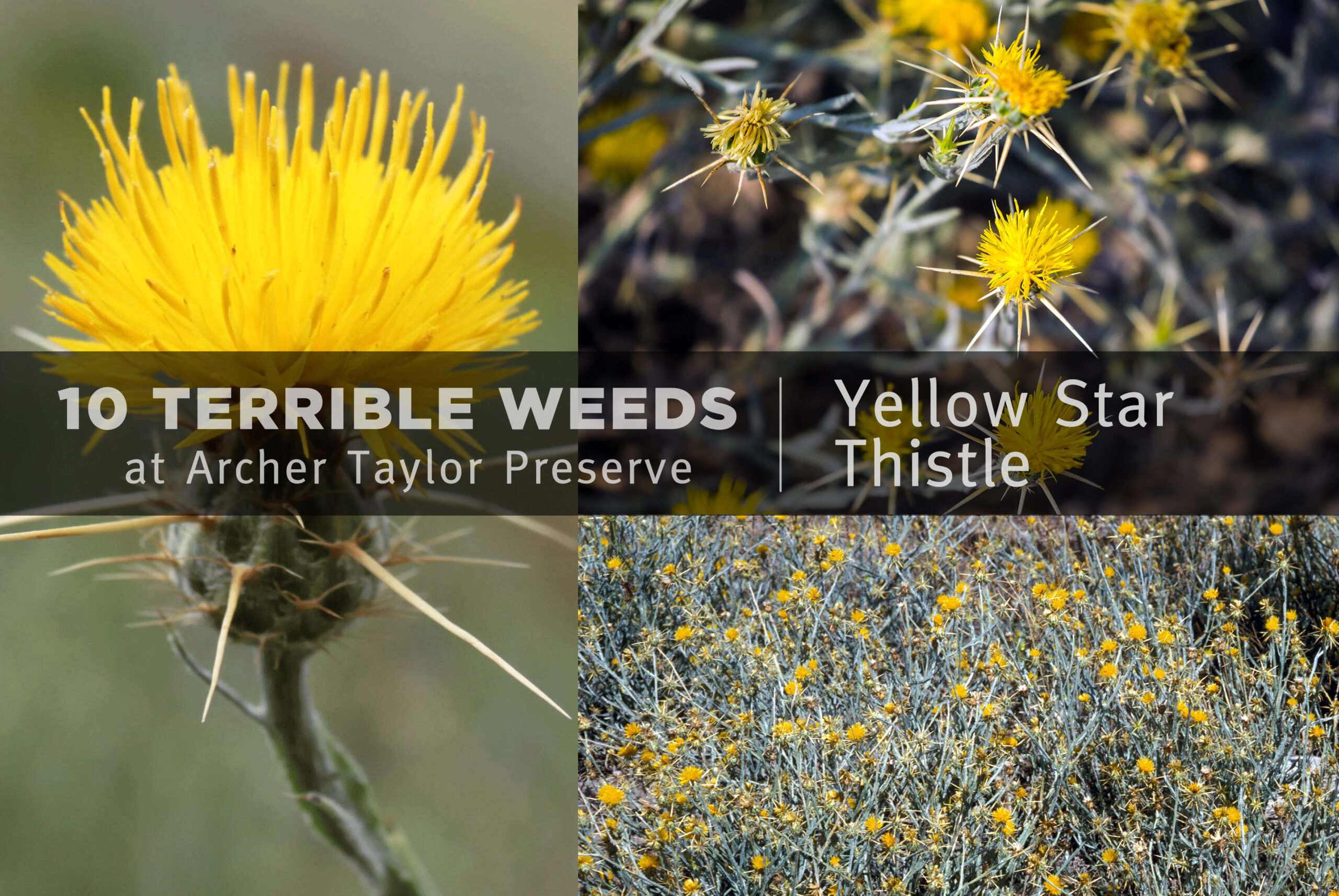Thistles, if only the softness of its moniker could equal that of its actual traits. Sadly, yellow star thistle is well known in Napa County for its thorny invasive presence. This thorny weed loves to inhabit open hills, grasslands, woodlands, fields, roadsides and rangelands. It is considered one of the most serious rangeland weeds in California. It is identified with gray-green to blue-green with a deep, vigorous taproot. It produces bright, thistlelike yellow flowers with sharp spines surrounding the base. Yellow star thistle grows to heights varying from 6 inches to 5 feet. The stems of mature plants are rigid, spreading, and typically branching from the base in open areas. In natural areas, it can substantially diminish native plant and animal diversity. Yellow star thistle is also toxic to horses and causes “chewing disease” resulting in starvation due to the inability to pick up and chew food.
The Land Trust staff have found five natural enemies to aid in managing it. Two flies and three beetles have been released for bio-control, perhaps the best long-term strategy for managing yellow star thistle. A rust fungus that attacks foliage and young plants has also been released. Plants have been found at the preserve that exhibit the effects of one or more of these controls. The most cost-effective way to manage yellow star thistle is to prevent its establishment by maintaining a healthy community of native or otherwise desirable plants, taking care not to import seed accidentally, carefully monitoring the land, especially disturbed areas and eradicating new populations upon detection.
To learn more on how the Land Trust staff works annually to remove invasive weeds at our Archer Taylor Preserve, consider attending a work party to help remove invasive weeds – we have one scheduled for June 10th. Together, we can help our Preserve thrive.

